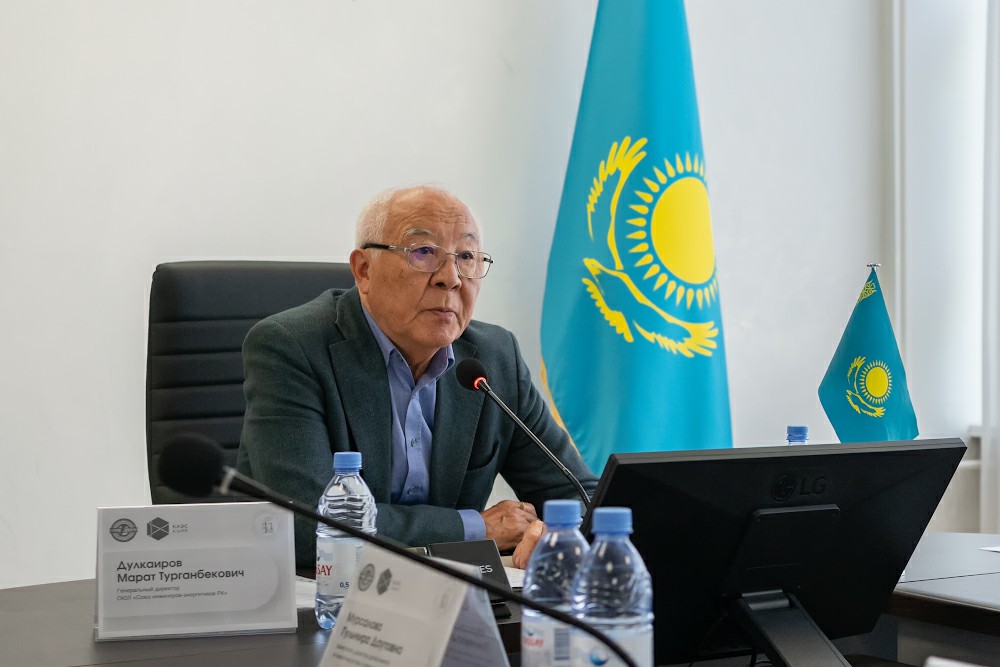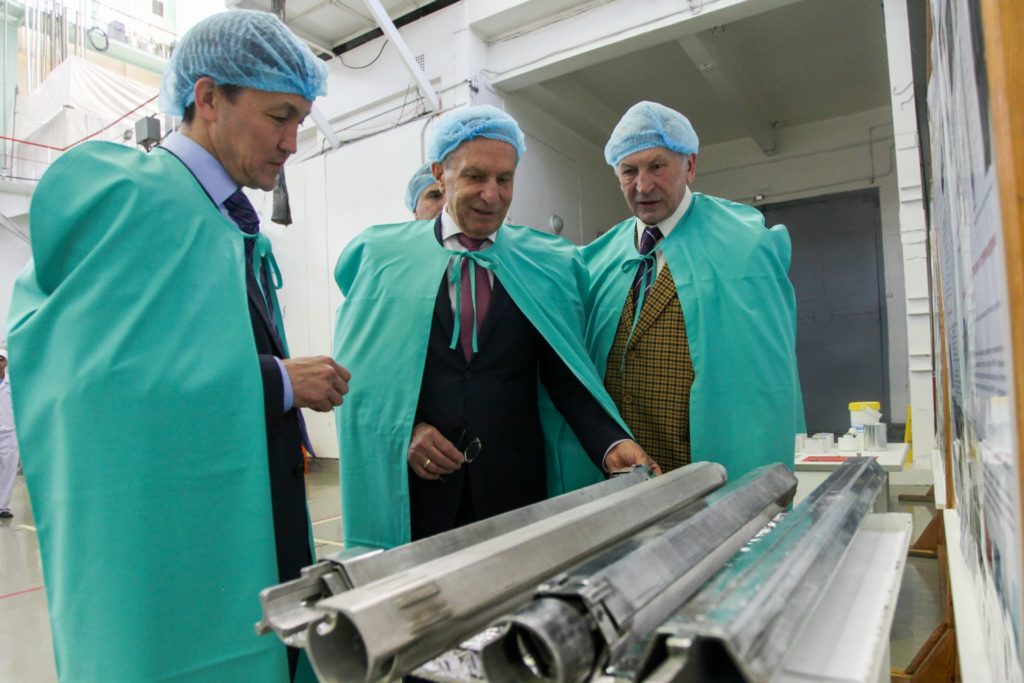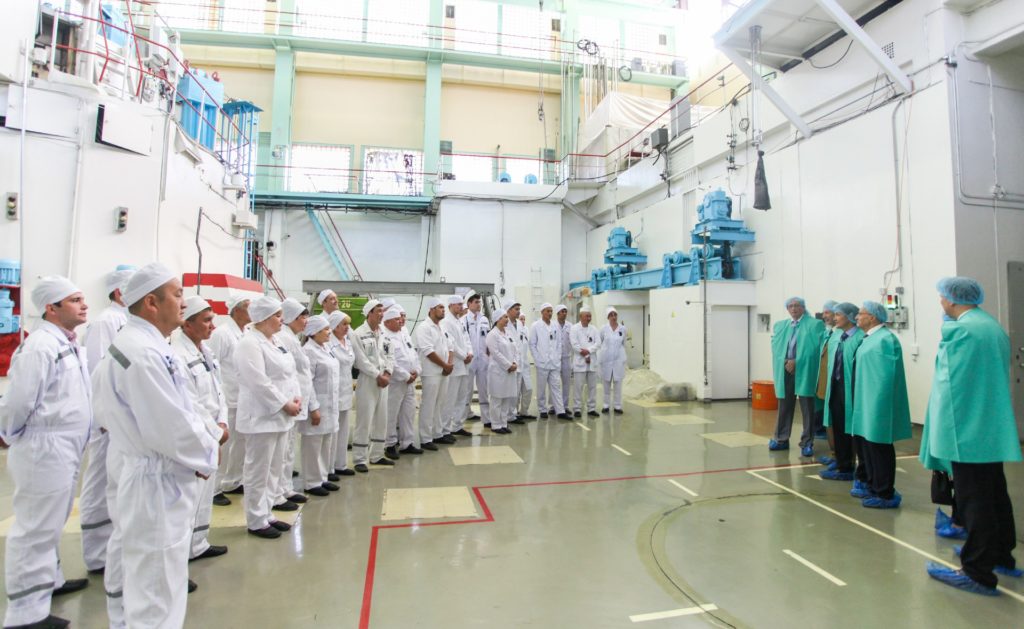
Wide Horizons for Cooperation
back to contentsActive discussions are underway in Kazakhstan about a nuclear power plant project, which might be carried out by Rosatom. The collaboration between Astana and Moscow extends into other areas and far beyond nuclear.
In early July, Almaty hosted a seminar to discuss details of a nuclear plant construction project.
“We in Kazakhstan have every condition and competence but have no nuclear station yet, although we have needed it for a long time,” says Marat Dulkairov, Director General of the Kazakhstan Union of Power Engineers.
According to Gulmira Mursalova, Deputy Director of the Atomic Energy and Industry Department at the Ministry of Energy, the village of Ulken, located on the shores of Lake Balkhash in the Almaty Region, has been selected as a potential site for the construction of a nuclear power plant in Kazakhstan.
She stated that a shortlist of potential reactor technology suppliers had been compiled to include four companies: KHNP (South Korea), EDF (France), CNNC (China), and Rosatom (Russia). “The key selection criterion will be the safety of the reactor technology, and we are working closely with the IAEA towards this goal. The agency’s commission that visited the country in March 2023 praised Kazakhstan’s preparedness for making a decision on the construction of a nuclear power plant,” Mursalova explained.

The Russia-Kazakhstan cooperation in nuclear energy and radiation technology dates back decades. A good example is the IVG.1M research reactor.
This is an upgraded version of IVG.1, a high-temperature gas-cooled reactor that was put into operation back in 1975 by Soviet nuclear engineers. IVG is a Russian acronym that stands for ‘high-temperature gas-cooled pulse reactor’. IVG.1 was used to conduct tests on fuel assemblies and reactor cores of HTGRs, including reactors for nuclear thermal rockets and nuclear propulsion systems.
IVG.1M, which was commissioned in 1990. Unlike IVG.1, it is a water-cooled reactor with a thermal capacity of 72 MW. IVG.1M is used to test various types of fuel assemblies (FAs) in different operating modes, conduct in-pile tests on FA structural materials, test FA designs and components, study possible emergency situations, and develop proactive prevention measures. The most important recent studies involve the interaction of structural materials used in the International Thermonuclear Experimental Reactor (ITER) with hydrogen and its isotopes under reactor irradiation conditions, and reactor radiation scattering in the atmosphere to substantiate the safety of nuclear power.
Initially, IVG.1M operated on highly enriched uranium fuel. However, in 2010, the National Nuclear Center (NNC) of Kazakhstan initiated a large-scale project to convert the reactor to low-enriched uranium (LEU) fuel. Uranium had to be enriched to no more than 20 %, as mandated by the IAEA, while simultaneously enhancing the reactor’s operating parameters.
Together with the US and Russian partners, NNC experts conducted a study to demonstrate the feasibility of the conversion, performed experiments, and produced the LEU fuel currently used in the reactor.
Among others, researchers from NPO Luch (part of Rosatom) took part in those studies.
“We manufactured experimental and standard water-cooled process channels, physical models, and individual fuel rods for IVG.1M. We had to develop a technology for the production of solid-drawn two-bladed self-separating bimetallic fiber fuel rods. With that technology, we solved the problem of low manufacturability of uranium-zirconium alloys with increased uranium content. We supplied about 15,000 fuel rods of our innovative design,” said Andrey Mokrushin, Deputy Director General for Science at NPO Luch.
As a result, the refueling interval more than doubled, and the reactivity margin increased significantly.

In May 2022, the reactor went critical using the new fuel. Since May 18, 2023, following the completion of the conversion and the issuance of all necessary permits, IVG.1M has been operating on LEU fuel. The reactor was brought to the predetermined power level; all the reactor systems performed nominally.
Other areas of cooperation between Rosatom and Astana include uranium mining (with work currently underway at five joint ventures in Kazakhstan), and nuclear medicine. “We have very good contacts with Kazakhstan as they plan to develop their medical facilities, and we are moving towards a closer partnership,” says Igor Obrubov, Head of Rosatom’s Healthcare Technology division.
In addition, Rusatom Service (part of Rosatom) is now entering a new market niche, namely biogas production from agricultural wastes. Among the five projects the company is currently working on, one is for Kazakhstan.
“There are many agricultural producers in the Almaty Region that would benefit from a partnership with us. What is more, Kazakhstan has well-developed laws on renewable energy sources, and green projects have great business prospects there. Besides, local residents have a good attitude to green energy,” notes Georgy Apkaneyev, Chief Expert at Rusatom Service.
Rosatom and Kazakhstan also cooperate in the field of education. On September 12, 2022, Almaty hosted an opening ceremony for the first academic year at the Almaty branch of the National Nuclear Research University (MEPhI, one of Rosatom’s backbone universities) at AlFarabi Kazakh National University. In 2023, the Almaty branch is enrolling students for two bachelor’s programs, Elementary Particle and Space Physics, and Secure High-Performance Computing Systems.




